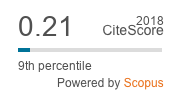Political Maps:
The Educational Dependency of the Brazilian Political Landscape's Subjective Structure
Keywords:
Political psychology, Cognitive map, Educational level, Hierarchical sorting, NMDSAbstract
The objective of this study is to examine the political knowlegde of different strata of society with different
educational leveis by employing the political maps model. With the method of hierarchical classification, subjective similarities
between Brazilian parties and politicians can be revealed, which can then be translated into geometric structures by means of
Nonmetric Multidimensional Scaling (NMDS). Comparisons made between different geographical groups with different
educational leveis indicate that people with a low educational levei have marked problems when it comes to classifying the
structures of the large political blocks. A comparation with Chilean data allows to integrate the results into a more general
context of cognitive psychology. Further, the possible influence of using TV and newspaper information is discussed.
Downloads
References
FORTRAN Program.
Downs, A. (1957). An economia theory of democracy. New York:
Harper & Row.
Downs, R.M.&Stea, D. (1982). Maps inminds. New York: Harper
&Row.
Gigerenzer, G. (1982). DereindimensionaleWáhler. Zeitschriftfür
Sozialpsychologie, 13, 217-236.
Guttman, L. (1968). A general nonmetric technique for finding the
smallest coordinate space for a configuration of points. Psychometrika,
33, 496-506.
Johnson, S.C. (1966). Hierarchical clustering schemes. Psychometrika,
32, 241-254.
Kruskal, J.B. (1964). Nonmetric multidimensional scaling: A numerical
method. Psychometrika, 29, 115-129.
Láge, D. (1994). Die politische Landschaft der Bundesrepublik
Deutschland - ein Ver-gleich der subjekti ven Struktur bei DDRund
BRD-Bürgern. Zeitschrift für Sozialpsychologie, 25, 71-
80.
Láge, D. (1995a). Los mapas políticos: Ia dependência educacional
de Ia estructura subjetiva dei panorama político chileno. Psykhe,
4, 39-48.
Lâge, D. (1995b). ^Redemocratización también en Ias mentes? Un
estúdio longitudinal sobre ei cambio de régimen político en
Chile. Psykhe, 4, 167-174.
Láge, D. (1995c). A influência da propaganda eleitoral sobre a
estrutura associativa política. Manuscrito não publicado.
Lage, D., Hejj, A. & Schrõger, E. (1991). Dic subjektive Struktur
der politischen Landschaft der DDR im Jahre 1990 - eine
Lángsschnittuntersuchung mit Ost-Berliner Studenten. Zeitschriftfür
Sozialpsychologie, 22, 260-269.
Lau, R.R. & Sears, D.O. (1986). Political cognition. Hillsdale:
Erlbaum.
Lindén, M. (1975). Some cognitive models of political party sympathy
based on Swedish attitude data. Scandinavian Journal of
Psychology, 16, 285-293.
Lingoes, J.C. & Roskam, E.E. (1973). A mathematical and empirical
comparison of two multidimensional scaling algorithms.
Psychometrika, 38, (Monograph Supplement).
Marx, W. & Hejj, A. (1989). Subjektive Strukturen. Gõttingen:
Hogrefe.
Marx, W. & Láge, D. (1995). Der ideologische Ring. Gõttingen:
Hogrefe.
Nohlen, D. (1986). Militárregimeund Redemokratisierung in Lateinamerika.
Aus Politik undZeitgeschichte, B9.
Norpoth, H. (1979). Dimensionen des Parteienkonflikts und Praferenzordnungen
der deutschen Wáhlerschaft: Eine Unfoldinganalyse.
Zeitschrift für Sozialpsychologie, 10, 350-362.
Roskam, E.E. & Lingoes, J.C. (1975). MINISSA, Edinburgh Version.
FORTRAN Program.
Tolman, E.C. (1948). Cognitive maps in rats and men. PsychologicalReview,
55, 189-208.
Tolman, E.C. & Honzik, C.H. (1930). Insight in rats. University of
Californian Publications in Psychology, 4, 215-232.



